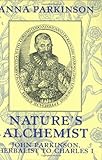 Anna Parkinson is possibly a descendant of John Parkinson (1567-1650), the apothecary and gardener noted for being the first to write in English about ornamental gardening. While the ancestral line is uncertain, Anna pursues John’s story with the zeal of a descendant in “Nature’s Alchemist: John Parkinson, Herbalist to Charles I”.
Anna Parkinson is possibly a descendant of John Parkinson (1567-1650), the apothecary and gardener noted for being the first to write in English about ornamental gardening. While the ancestral line is uncertain, Anna pursues John’s story with the zeal of a descendant in “Nature’s Alchemist: John Parkinson, Herbalist to Charles I”.
John Parkinson was born in Lancashire in northwest England. His family were farmers and he and his six siblings learn the importance of wild plants to supplement their diet and to provide for medicine and other needs. John was also precocious, as he learned to read, write, and speak Latin well. This was unusual for his social status, as Latin was the language of science and of most printed books.
It is also remarkable his family afforded sending John Parkinson to London to make his career at age 15 – a ten-day journey at the time. Over the next 40 years, he steadily worked his way into being a skilled apothecary, eventually achieving his 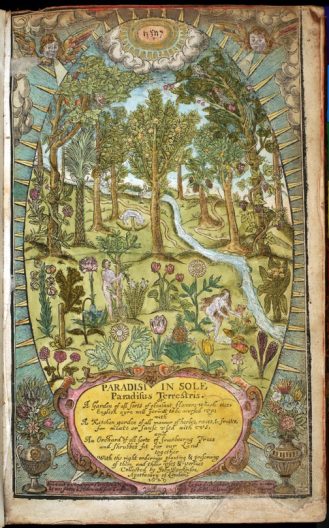 royal position as noted in the Anna Parkinson’s sub-title.
royal position as noted in the Anna Parkinson’s sub-title.
As an apothecary, it was necessary for John Parkinson to have a garden. He developed a site known as the “Long Acre” in central London that became a tourist attraction. He was enthusiastic in his love of ornamental plants and always eager to try new things. His greatest passion was for tulips, of which he created 125 new varieties.
This passion in part led to the publication of “Paradisi in Sole: Paradisus Terrestris”, a book primarily of ornamental plants, and especially bulbous plants including tulips. The Miller Library has a facsimile (titled “A Garden of Pleasant Flowers”) of this work reproduces the 17th century English – quite readable with a little practice. The title page features a highly stylized image of the Garden of Eden. Anna Parkinson wrote about this book: “The most startling feature of the Paradisus was that it was the first English book about plants to be devoted above all to their beauty, making this the key purpose of a garden.”
Reviewed by: Brian Thompson on February 23, 2024
Excerpted from the Spring 2024 issue of the Arboretum Bulletin
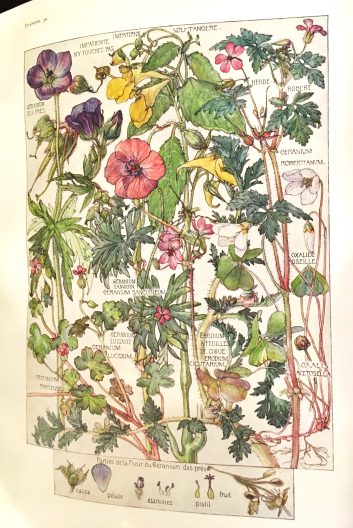 in that her scientific vigor was recognized when she was accepted as a Fellow in the Linnaean Society of London in 1906, a prestigious group of botanical scientists that require a two-thirds approval of membership to be accepted.
in that her scientific vigor was recognized when she was accepted as a Fellow in the Linnaean Society of London in 1906, a prestigious group of botanical scientists that require a two-thirds approval of membership to be accepted.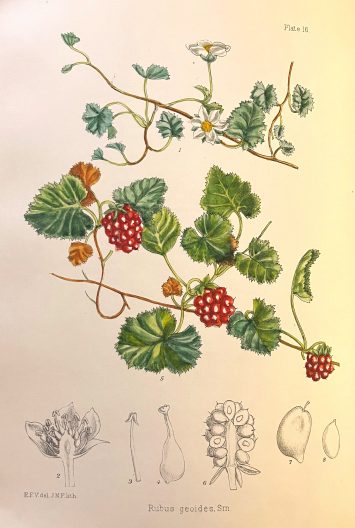 The Falkland Islands, or Islas Malvinas, are an isolated archipelago east of South America in the south Atlantic Ocean. Uninhabited when discovered by European powers in the 1600s, dispute over its control has continued for centuries, including a deadly war between Argentina and Britain as recently as 1982. The flora is quite isolated, too, with no native trees, and the largest shrubs only reaching seven feet tall.
The Falkland Islands, or Islas Malvinas, are an isolated archipelago east of South America in the south Atlantic Ocean. Uninhabited when discovered by European powers in the 1600s, dispute over its control has continued for centuries, including a deadly war between Argentina and Britain as recently as 1982. The flora is quite isolated, too, with no native trees, and the largest shrubs only reaching seven feet tall. Librarians are often called upon to solve mysteries, and we enjoying hearing the stories of triumphs by our colleagues. One of my favorites is the story of Mary Gunn (1899-1989), a librarian at the Botanical Research Institute in Pretoria, South Africa. She had a special interest in the history of botany and botanical illustration.
Librarians are often called upon to solve mysteries, and we enjoying hearing the stories of triumphs by our colleagues. One of my favorites is the story of Mary Gunn (1899-1989), a librarian at the Botanical Research Institute in Pretoria, South Africa. She had a special interest in the history of botany and botanical illustration.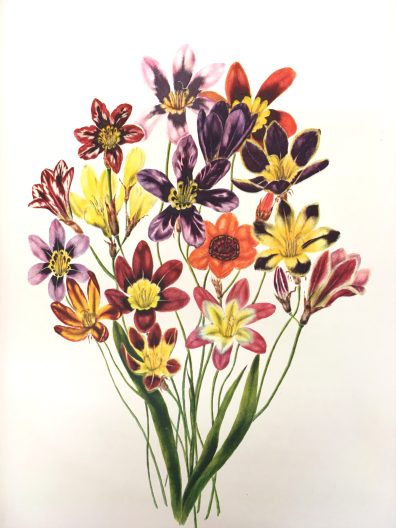 ct few in “Specimens,” but why this was done anonymously is unknown. The book received high praise at the time, with a copy being given to Queen Victoria. There were only 110 printed, and those soon became rare collector’s items.
ct few in “Specimens,” but why this was done anonymously is unknown. The book received high praise at the time, with a copy being given to Queen Victoria. There were only 110 printed, and those soon became rare collector’s items.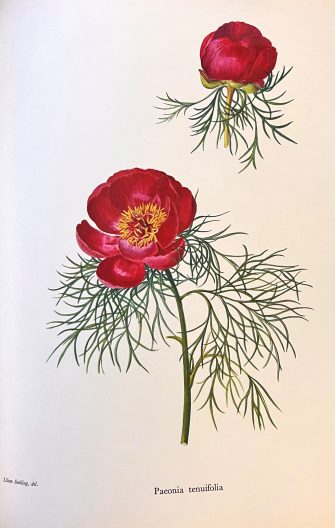 Snelling’s illustrations can also be found in the monograph on the genus Lilium by Elwes. Although the Miller Library does not have this book, her illustrations have been reproduced in other books on lilies in the collection. She also produced the exquisite color plates and drawings for “A Study of the Genus Paeonia” by Frederick Claude Stern (1946), including this illustration of Paeonia tenuifolia.
Snelling’s illustrations can also be found in the monograph on the genus Lilium by Elwes. Although the Miller Library does not have this book, her illustrations have been reproduced in other books on lilies in the collection. She also produced the exquisite color plates and drawings for “A Study of the Genus Paeonia” by Frederick Claude Stern (1946), including this illustration of Paeonia tenuifolia.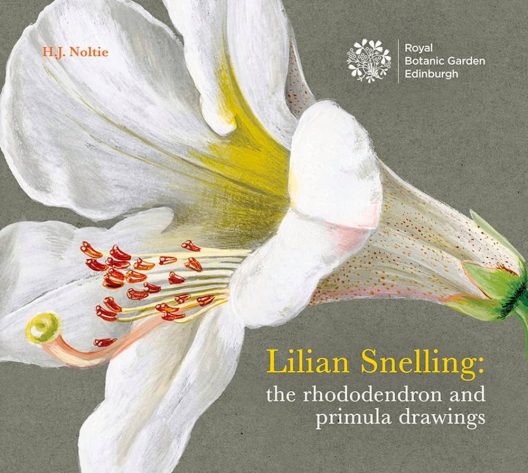 “Lilian Snelling (1879-1972) was probably the most important British botanical artist of the first half of the 20th century.” This bold statement was made by Brent Elliott, the long-standing Head Librarian and Historian for the Royal Horticultural Society, in an article for that society’s journal “
“Lilian Snelling (1879-1972) was probably the most important British botanical artist of the first half of the 20th century.” This bold statement was made by Brent Elliott, the long-standing Head Librarian and Historian for the Royal Horticultural Society, in an article for that society’s journal “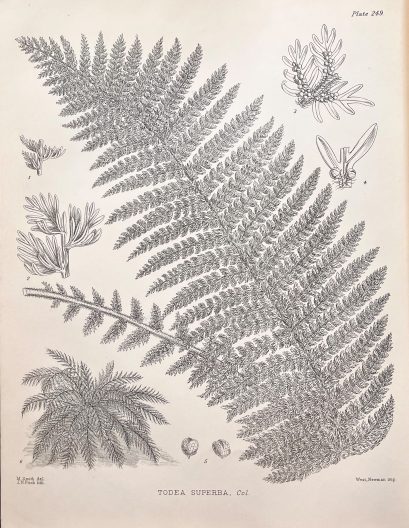 .
.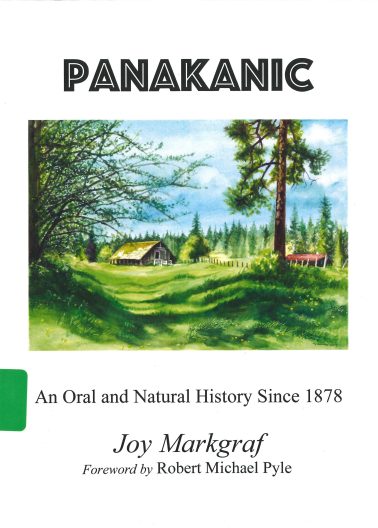 The Panakanic Prairie is a vernally moist meadow amongst the coniferous forests north of White Salmon, Washington that turns blue each May with the flowers of camas (Camassia quamash). It has a rich human history, including that of the Klickitat people. From the 1880s through much of the 20th century, it was the home and ranch of the Markgraf family.
The Panakanic Prairie is a vernally moist meadow amongst the coniferous forests north of White Salmon, Washington that turns blue each May with the flowers of camas (Camassia quamash). It has a rich human history, including that of the Klickitat people. From the 1880s through much of the 20th century, it was the home and ranch of the Markgraf family.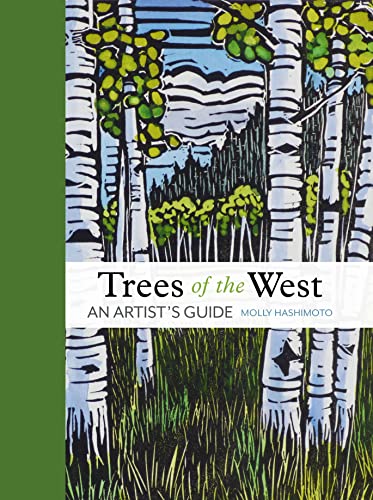 Molly Hashimoto is a good friend of the Miller Library, having exhibited in our space for many years, typically each November and December. Her books are a blend of engaging watercolors and block prints, while the text educates the reader about both art techniques and the subjects of the illustrations.
Molly Hashimoto is a good friend of the Miller Library, having exhibited in our space for many years, typically each November and December. Her books are a blend of engaging watercolors and block prints, while the text educates the reader about both art techniques and the subjects of the illustrations.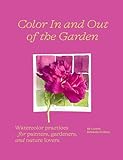 After an especially difficult period in her life, Seattle gardener, author, and artist Lorene Edwards Forkner began a daily, meditative practice. She would pick something from her garden and using watercolors, paint a 3×3 pattern of distinct color squares, trying to capture each of the colors she saw in the subject.
After an especially difficult period in her life, Seattle gardener, author, and artist Lorene Edwards Forkner began a daily, meditative practice. She would pick something from her garden and using watercolors, paint a 3×3 pattern of distinct color squares, trying to capture each of the colors she saw in the subject.